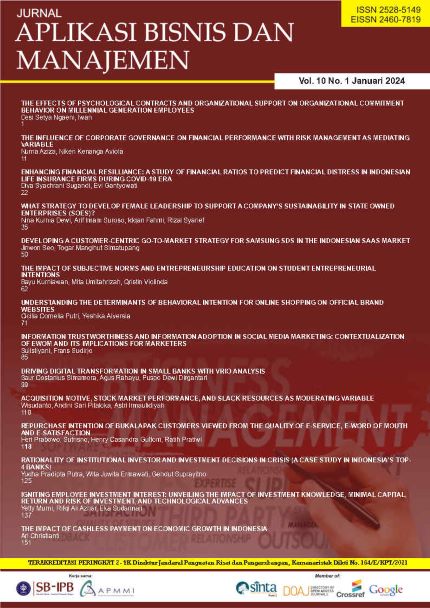Customer Segmentation For Digital Marketing Based on Shopping Patterns
Abstract
Customer segmentation is the customer grouping based on similar shopping behavior or patterns. Inappropriate customer segmentation can have negative impacts, such as lost marketing opportunities, resource inefficiencies, loss of potential customers, and decreased performance, and business profits, especially in customer satisfaction. Therefore, this study aims to develop a customer segmentation model for digital marketing. This model is based on customer shopping patterns using the Recency-Frequency-Monetary (RFM) model and the Partitioning Around Medoids (PAM) method. The research data is historical customer purchase data consisting of 18,535 transactions and 541,909 transaction details from 4,339 customers for 3,665 product items over two years. The research variables focus on the model used: recency, frequency, and monetary. The five customer segments generating from this study are main, potential, general, minimum, and prospective customer. The internal validation results show that the minimum C-Index value is 0.1429 (close to zero), and the maximum Calinski-Harabasz Index value is 512.9553. It shows that the quality of customer segmentation results is good. In other words, the model can identify correlations between customer segments and shopping patterns and preferences. In this way, marketers can optimize services, adjust strategies, and offer the right products for each customer segment. Further research can be directed at product segmentation.
Keywords: partitioning around medoids, digital marketing, shopping pattern, recency-frequency-monetary, customer segmentation








